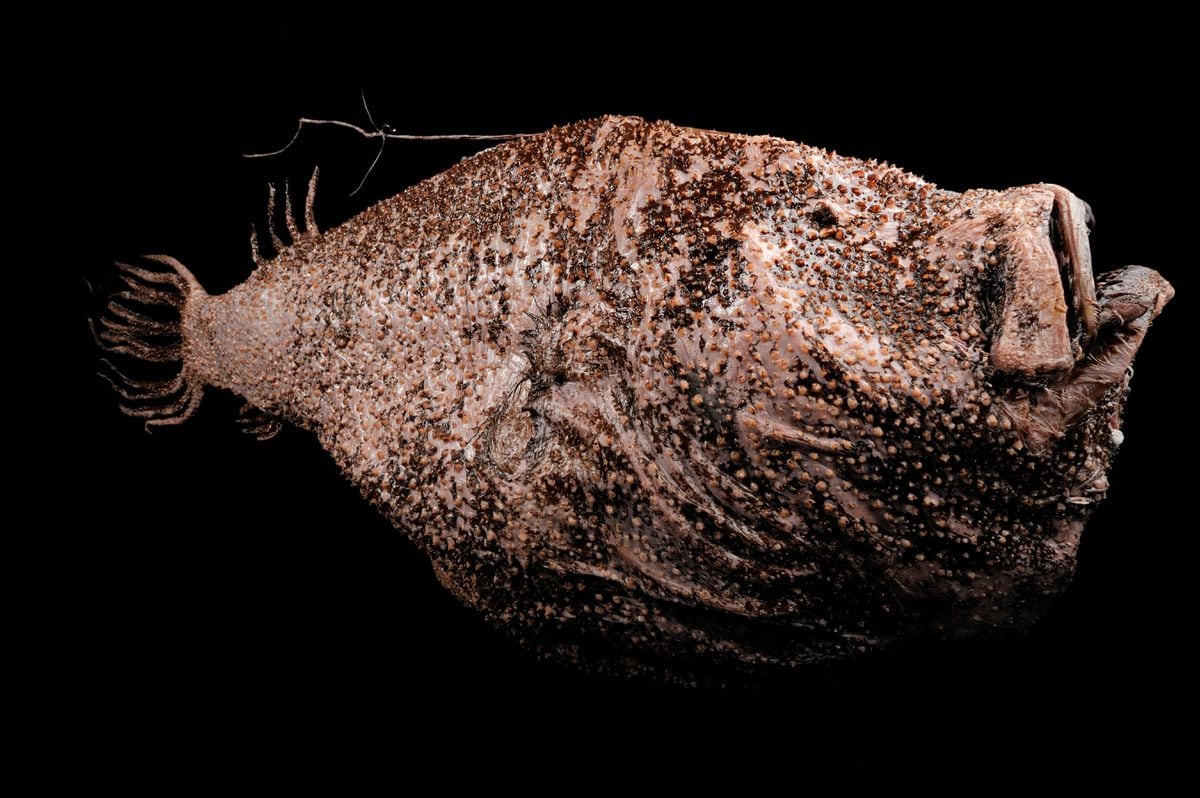In 1867 Bjarni Saemundsson was born, the first Icelandic biologist who decided to dedicate himself to studying fishing.
He did it without funding and when his work as a high school teacher allowed it.
In May 1917, a very peculiar fish appeared in the nets of a fishing boat and was taken to Saemudsson for his study.
It was a female ceratid, specifically of the species
Ceratias holboelli
.
In an article published in 1922, the Icelandic biologist expressed his amazement at seeing the fish:
“I was surprised to find that on the right side of its gut it had two juveniles hanging attached by the nose.
At first glance it seemed that these little ones were just pieces of skin.
I have no idea how or when the pups have attached to the mother.
This is a puzzle for some future researcher to solve."
That future researcher was Charles Tate Regan and he arrived only three years later.
The specialty of this British scientist was describing and classifying fish, so it didn't take long for him to find a copy of
Ceratias holboelli
.
Under the gills, Regan realized, this specimen had a fish attached in much the same way as Saemudsson had previously described.
However, upon dissecting it, he realized that the small fish were not hatchlings, but males of the same species:
“The male fish is simply an appendage of the female and is completely dependent on her for nutrition.
So perfect and complete is the union of husband and wife that one can almost be sure that their genitals mature simultaneously.
It is perhaps not too fanciful to think that the female can monitor the male's seminal discharge to ensure that it takes place at the right time for the fertilization of her eggs."
Researcher Charles Tate Regan.Royal Society
Ceratids are those fish with giant, toothed mouths that live in the depths of the seas, below 300 meters deep.
As the movie “Finding Nemo” shows us, sunlight does not reach such depths, so these sea monsters use a luminous lure to attract prey.
Bioluminescence is the product of a symbiotic relationship, since bacteria live in the lamp that provide light in exchange for nutrients and protection.
However, all these characteristics are unique to females, since this species has extremely pronounced sexual dimorphism.
For example, female
Ceratias holboelli
can be up to 500,000 times heavier than males.
These lack bioluminescence, but they have highly developed eyes and nose that allow them to locate their mate as quickly as possible.
They look for both the luminous lure and a pheromone that the female secretes in abundance.
Even so, meeting in the darkness of the abyss is not easy, so when they do, the males give the females an eternal kiss.
This is the only known case in nature of sexual parasitism.
The male secretes an enzyme that digests both his own skin and that of the female, so that his tissues and blood vessels are forever connected.
Little by little, the male's body is wasting away.
His head is almost completely fused into the female's body, thus losing much of his brain, eyes and even his heart.
Since he can only survive thanks to the nutrients provided by the female, he is considered a parasite.
Two have become one.
What it does retain in the male are the gonads, so it becomes a mere sexual appendage.
In turn, the female becomes a kind of hermaphrodite with the ability to fertilize herself.
And only after the union, male and female become sexually mature.
When the young males finish their larval phase, they no longer feed and only depend on their liver reserves to survive until they find a female.
If the long-awaited meeting does not take place in a few months, the young individual will die without having reached maturity, since neither his jaws are prepared to hunt nor his digestive system has fully developed.
In reality, this is only the case for a few ceratids, as there is enormous variability.
There are 168 species and only in 23 of them are the males forced to permanently join the females to survive.
In most species, males mate only temporarily or not at all.
The curious thing is that this sexual parasitism does not have a single origin in the evolution of ceratids, but has occurred independently on several occasions.
So, if it can appear easily and has clear advantages in reproduction, why aren't there other animals with sexual parasitism?
As transplant doctors know very well, uniting different bodies is not easy.
The normal thing is that the immune system of any vertebrate rejects a tissue that is not its own.
But in ceratids this does not happen.
There are females that can have up to eight different fused males and their defenses say nothing about it.
How this could be possible has been studied and in 2020 the results were published in the journal
Science
: four different mutations appear in these fish that produce a reduction in the immune response.
It could be that sexual parasitism drove the changes in defenses, but the study authors think it's more likely the other way around.
That is to say: the fact that these fish had a different immune system allowed sexual parasitism, which is impossible in other animals.
There are species like
Gigantactis vanhoeffeni
whose males do not fuse their tissues, but already present some of these genetic differences.
Species 'Gigantactis vanhoeffeni' alamy / cordon press
In the depths of the oceans there is no shortage of microorganisms.
How can ceratids survive if they are immunosuppressed?
The possibility that these fish have developed an entirely new type of immune system is not ruled out, although it is more likely that something more like a reorganization of the defenses has occurred, so that they attack pathogens and not individuals of their own. his own kind.
Above all, these discoveries hold promise for the study of immunity and transplantation.
It's nice to think that what started in 1922 with an Icelandic biologist surprised by a fish, could end up saving lives more than a hundred years later.
You can follow
MATERIA
on
,
and
, or sign up here to receive
our weekly newsletter
.






/cloudfront-eu-central-1.images.arcpublishing.com/prisa/FPM2IKJUNFGWPPZIRZ52BX74EU.jpg)







/cloudfront-eu-central-1.images.arcpublishing.com/prisa/EXJQILQR5QI7OMVRTERD7AEZAU.jpg)